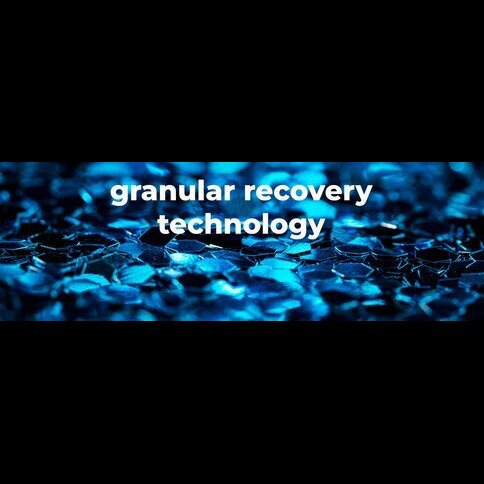In the ever-evolving digital landscape, data integrity and recovery are crucial. Enter granular recovery technology—a game changer in how we retrieve lost or corrupted data. Let’s dive into what makes this technology so revolutionary.
What is Granular Recovery Technology?
Granular recovery technology allows for the precise recovery of individual files or specific data segments within larger datasets. Unlike traditional methods that might require restoring entire systems or large chunks of data, granular recovery zeroes in on exactly what’s needed.
The Evolution of Data Recovery Solutions
Historically, data recovery was a cumbersome process. Early solutions were often slow, imprecise, and expensive. As digital data grew in complexity and volume, the demand for more sophisticated recovery methods surged. Granular recovery emerged as a response to these needs, offering a more targeted approach.
How Granular Recovery Technology Works
Granular recovery operates through detailed data indexing and advanced search algorithms. When data loss occurs, the system quickly identifies and retrieves specific files or data fragments. This is made possible through:
- Detailed Metadata Analysis: Helps locate exact file locations.
- Advanced Algorithms: Allow precise searches within backups.
- Selective Restoration: Only the necessary data is restored, saving time and resources.
Benefits of Granular Recovery Technology
Enhanced Data Precision: Only the required data is restored, avoiding unnecessary bulk recovery. Efficiency and Speed: Reduces downtime by quickly restoring critical files.
Cost-Effectiveness: Less data to process means lower operational costs.
Applications in Various Industries
Granular recovery technology has transformative applications across sectors:
Healthcare: Ensures patient records are restored quickly without disrupting services.
Financial Services: Protects transactional data and critical financial information.
Information Technology: Recovers specific system files, minimizing disruptions.
Education: Retrieves academic records and research data efficiently.
Granular Recovery vs. Full Recovery
Granular Recovery:
- Advantages: Speed, precision, and cost savings.
- Disadvantages: May require more sophisticated software and expertise.
Full Recovery:
- Advantages: Comprehensive data restoration.
- Disadvantages: Slower and more resource-intensive.
Real-World Examples and Case Studies
Healthcare Success Story: A hospital quickly recovered crucial patient data after a ransomware attack, ensuring no interruption in patient care.
Financial Services: A bank restored specific transactional data, avoiding financial discrepancies.
Challenges and Limitations
While promising, granular recovery technology isn’t without challenges:
- Technical Challenges: Requires advanced infrastructure and expertise.
- Implementation Issues: Initial setup can be complex and time-consuming.
Future Trends in Granular Recovery Technology
Emerging technologies like AI and machine learning are set to enhance granular recovery further, making it faster and more accurate. Predictions suggest that within the next decade, granular recovery will become the standard, driven by the need for efficient data management.
How to Choose a Granular Recovery Solution
When selecting a granular recovery solution, consider:
- Compatibility: Ensure it works with your existing systems.
- Scalability: Can it grow with your data needs?
- Support and Training: Access to ongoing support and training is crucial.
Top providers include:
- Acronis
- Commvault
- Veeam
Implementing Granular Recovery in Your Organization
Implementing this technology involves several steps:
- Assessment: Evaluate your current data recovery needs.
- Selection: Choose the right granular recovery solution.
- Setup: Install and configure the system.
- Training: Ensure staff are trained to use the new technology.
- Monitoring: Regularly monitor and adjust as necessary.
Maintaining and Updating Recovery Systems
Routine maintenance and updates are vital. Schedule regular checks and keep your software up to date to ensure optimal performance.
Security Concerns with Data Recovery
Data privacy is paramount. Ensure your recovery system has robust security measures to protect sensitive information. Encryption and access controls are essential to safeguard data during recovery processes.
Conclusion
Granular recovery technology represents a significant leap forward in data recovery, offering precision, speed, and cost savings. As digital data continues to grow, so too will the importance of efficient recovery solutions. Embracing granular recovery can future-proof your organization, ensuring you’re prepared for any data loss scenario.
FAQs
What is the primary advantage of granular recovery technology? The main advantage is its precision—it allows for the recovery of specific data segments without restoring entire datasets.
How does granular recovery differ from traditional data recovery methods? Granular recovery targets individual files or data fragments, while traditional methods often require restoring large amounts of data or entire systems.
Can granular recovery be used for all types of data? Yes, it can be applied to various data types, though the specific capabilities may depend on the recovery solution used.
What industries benefit the most from granular recovery technology? Industries such as healthcare, financial services, IT, and education benefit significantly due to their need for precise and efficient data recovery.
What should I consider when choosing a granular recovery service provider? Consider factors like compatibility with your systems, scalability, support, and training offered by the provider.
